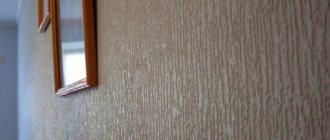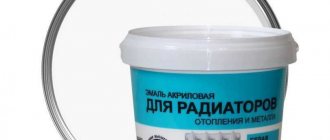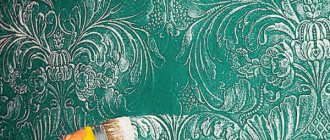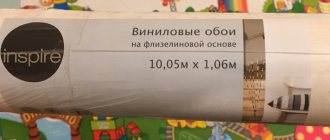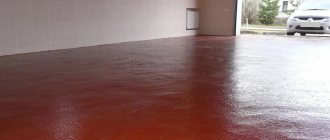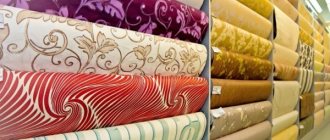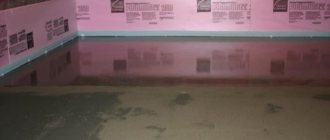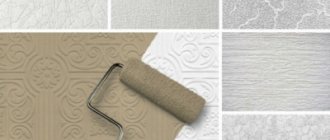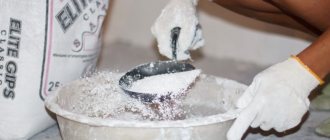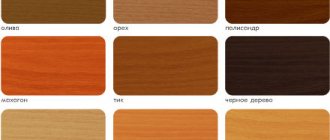- December 11, 2019
- Walls
- Kristina Degtyareva
Anyone who has ever done a renovation knows very well about the variety of finishing materials that exist today. At the same time, wallpaper remains the most popular. Consumers prefer to purchase wallpaper for painting, because with their help they can change the interior, spending minimal money on it. What paint is used to paint wallpaper before painting? How do you even choose the right wallpaper? We'll tell you about this and much more right now.
Painting or wallpaper? How to make a choice
Quite often, apartment owners think that it would be much more expedient to just paint the walls without sticking wallpaper on them. There are two arguments - firstly, it’s faster, and secondly, photographs of rooms decorated in this way look no worse. However, experts say that paintable wallpaper is a more practical and durable option.
Of course, everyone makes the final choice independently, but there are a number of features that can influence the choice of materials. Here are the criteria that allow you to finally decide which finishing option to choose:
- the presence or absence of defects on the walls;
- coating characteristics and difficulty of dismantling;
- cost of materials (and professional services if you don’t want to do the work yourself).
Let's consider each point separately.
Condition of the walls
The most important factor when choosing wallpaper for painting or paint as a finish is the condition of the surfaces. Experts note: not a single coloring composition will be able to mask unevenness and cracks in the plaster. In order to achieve an ideal result, the entire damaged surface will have to be completely renewed. This, of course, will affect the timing of the work, as well as the cost of repairs.
If there is any damage to the walls, it is advisable to use thick textured wallpaper - non-woven or vinyl with embossing. High-quality materials will be able to hide any errors in the wall, and no additional preparation will be required.
General recommendations for painting
In addition to the specific features for each type of wallpaper and paint, there are several general recommendations for painting. They will be related to the practicality of the process, as well as its safety for humans.
The work of painting wallpaper should begin with the preparation of the room where it will take place. All furniture that interferes with the process should be removed or moved from the room. This will also help prevent it from getting dirty.
Before painting, most wallpaper should be cleaned and degreased. Otherwise the paint may come out crooked. In the end, everything will have to be redone. Worst case scenario is to re-glue the wallpaper.
Wallpaper must be cleaned before painting.
It is important to prepare the room for painting. It is recommended to cover the floor and seal the baseboards. Otherwise, there is a risk of staining everything with paint. And if it dries, you will most likely have to remove it with a solvent, and this is a rather difficult task.
Before painting the wallpaper, cover the floor with film
It is not recommended to stay in a room with painted wallpaper for a long time. Almost any undried paint has a specific, pronounced odor. Inhaling it may cause dizziness.
In addition to painting, wallpaper can be further decorated or protected. The simplest solution would be to coat the product with colorless varnish. This will increase the life of the paint and also additionally protect the surface of the wallpaper from external influences.
Varnish will provide additional protection for painted wallpaper
Another option would be to apply different patterns. Or use matte varnish, which will add additional shine to the wallpaper surface. At the decoration stage, it is possible to show any creative impulses. And in case of failure, they can be painted over.
Choosing paint for wallpaper to paint is a primary task. The service life and appearance of the product will depend on his literacy. Wallpaper should fit into the overall interior of the room and the entire house. And also a very important step is painting them. It should be approached with special care. However, as a result of the work, the house will sparkle with new colors.
Cost of paint and wallpaper
It may seem that in terms of this parameter, paint is much cheaper than paintable wallpaper. The most budget option is acrylic-based paint. At the same time, a can with a volume of 10 liters is enough to paint a room of 100 square meters in two layers. Latex paints will cost almost four times more. The most expensive option is a dye with a ceramic composition, which is characterized by color intensity and increased strength.
As for the cost of wallpaper, there are a variety of options. The most inexpensive option is paper wallpaper (on average, one roll will cost 300-400 rubles); the cost of vinyl canvases is about 600 rubles; a little more expensive - non-woven wallpaper (about 800 rubles per roll).
It would seem that everything is obvious: paint is much more profitable than wallpaper. However, it is important to consider that using paint will only be a truly budget-friendly and quick solution if the walls are in perfect condition. If the surfaces have uneven surfaces and cracks, you will spend much more effort, time and money than if you chose to wallpaper.
Do-it-yourself drawing on wallpaper
To make the interior of the room unusual, you can create a picture on the wall. The procedure can be carried out using several methods:
- Using stencils. The simplest and most accessible method for everyone. Using stencils, unusual patterns are created on the surface.
- Use a thick bristled roller. This method can give the wall relief. You can also purchase special rollers that already have an ornament on them.
- With a brush. Suitable for those who can draw.
Often for small rooms, chaotic application of paint of different shades is used. This way you can get a unique combination of colors, while visually enlarging the room.
Drawings can be created using stencils
Advantages of wallpaper for painting
Experts say that properly selected wallpaper for painting can maintain an impeccable appearance for several years. The thing is that coatings made of vinyl or non-woven fabric are highly resistant to moisture and dirt. Such fabrics can be cleaned using detergents and a damp soft cloth. As a last resort, you can update the appearance of the coating by painting. You can apply dye not only to get rid of dirt, but also to update your interior design.
Important information
On average, the color of wallpaper can be changed about 3-10 times. This indicator depends on the type of coating material and is usually indicated on the packaging.
Wallpaper selection
What paint to paint the wallpaper? It’s worth starting from what kind of coating is used and what density it has. Patterned, textured and smooth wallpaper can be used as a basis for painting.
Of course, the texture of the material should be taken into account. So, it would be strange to paint wallpaper that imitates natural wood in blue or red tones. For a children's room, a neutral base is recommended - this could be a suitable theme or a weakly expressed relief.
General information on finishing
Quite often, paintable wallpaper is used when home owners need to regularly change the finish. The reasons may be different:
- desire to update the interior;
- special operating conditions that lead to the appearance of contamination, for example, if wallpaper is used in the bathroom, hallway or kitchen;
- the appearance of mechanical damage - this is typical for coatings in children's rooms or any premises with a high level of traffic.
It is not recommended to paint paper and vinyl canvases too often, because these materials, although they do not deteriorate quickly, will still last significantly less if they are repainted frequently.
Quite often, people who do not have much experience in repairs are interested in whether it is possible to paint wallpaper with water-based paints. This question is quite logical, because not all types of wall coverings can withstand contact with liquids. For this purpose, experts advise, waterproof wallpaper should be painted with water-based compositions.
Speaking about what paint is used to paint wallpaper for painting, it is worth mentioning separately about the enamels that may remain after decorating facades or window and door structures. In residential premises, painting wallpaper with such enamels is strictly prohibited!
Is it possible to paint wallpaper without painting?
Quite often, apartment owners wonder: is it possible to skip the procedure of dismantling the old covering and simply paint the wallpaper to save time, money and effort? Experts do not advise resorting to dyeing ordinary paper wallpaper, because they may suffer from the application of the dye, and the result will be far from the desired. Firstly, the paint may not apply evenly, and secondly, the appearance of defects, such as bubbles, is possible. Ordinary wallpaper can become deformed and spread, peeling off the wall.
What you need to know before starting work
To figure out how to paint wallpaper, you first need to understand the technology of finishing with the appropriate wallpaper. The following features of the procedure must be taken into account:
- so that the canvases that are being painted do not fall off the walls, you need to use a special adhesive with increased fixation;
- In order for the pattern to be uniform, the paint must be liquid (too thick a substance leads to the fact that the color does not apply evenly);
- when painting paper materials, it is necessary to use a thin application so that the wall covering does not have time to get wet;
- You can add texture using rollers with long pile.
If old wallpaper with defects is painted, it is necessary to use a thick layer of paint, which hides the defects and makes the walls evenly painted.
Alkyd paints
According to professionals, this type of paint is intended for use either in utility or non-residential areas of an apartment or house. This is due to the fact that alkyd paints can be hazardous to health, because they contain various oils and resins. People staying in a room with wallpaper painted with such paints may experience serious respiratory diseases. The average service life of alkyd paints is about 5 years; over time, their appearance will deteriorate. Please note: this type of paint is classified as fire hazardous.
However, alkyd paints have not only disadvantages. Among the advantages are brightness of color, high durability, resistance to humidity and direct sunlight. Due to the fact that alkyd paints contain antifungal additives, the process of rotting will not begin on the surface.
How to repaint canvases
If the painted walls are not satisfied with the final result, they can be repainted. To do this, you should wait until the canvas is completely dry and only then begin the process.
Features of repainting dark wallpaper in a light tone
Dark shades visually make the room cramped and small, so painting is often done using a lighter color.
To prevent dark spots from appearing on the surface in the future, it is necessary to apply white paint very carefully. After the surface is completely dry, apply the selected color.
Canvases with a relief pattern must be lightened several times. After the surface turns white, apply the selected shade.
To paint dark canvases, they must first be lightened.
Water-dispersion paints
Among the most common and used paints are water-dispersion paints. Unlike alkyd, they do not contain oils, resins and other harmful components. It is for this reason that water-dispersion paints are excellent for painting wallpaper in any living area of the house. Another advantage is a large number of color options. In general, water-dispersion paint for wallpaper fits perfectly into the interior of any room, adding beauty and uniqueness to it.
They can be divided into several subspecies:
- Acrylic-latex paint on a water-dispersion basis. This composition is suitable for painting wallpaper with a relief texture and non-woven fabric, and can be combined with fiberglass. The advantages of acrylic-latex paint include low odor and quick drying. The composition can be used to paint the walls of the kitchen, bedroom, living room and other living spaces. However, it is not suitable for the bathroom, because it does not tolerate high air humidity.
- Latex paint on a water-dispersion basis. The main advantage of such compositions is durability. They contain acrylic latex and styrene butadiene, thanks to which they acquire elasticity. Most often, this dye is sold white; the color of wallpaper paint can be changed using tints. It should be noted that the shade will be soft; rich and bright tones cannot be obtained.
Color options
There can be a large number of options for painting walls. It is necessary to highlight the most common ones:
- Monochromatic coloring. This type involves covering the wall in one color without embossed decorations.
- Relief painting. For such purposes, special wallpaper is purchased that has a relief pattern.
- Painting in several colors. Thus, you can create an unusual interior at home. You can do it yourself, without large financial expenses, but you need to correctly combine colors.
Using textured wallpaper you can get a seamless surface. Since small drawings visually smooth out the wall and hide defects.
The combination of several shades allows you to create an unusual interior
Acrylic paints
Speaking about what kind of paint is used to paint wallpaper, we cannot help but mention acrylic compositions. They, like latex paints, are quite popular, because they have many advantages: they can be used in any living space - even in children's rooms, because they are completely harmless and do not contain chemicals or other harmful substances. Such compositions are excellent for non-woven fabrics, however, there are varieties that are suitable for painting glass wallpaper and paper.
Water-based acrylic compositions differ from water-dispersion paints, which contain latex, in their color saturation - they are bright and retain color for a long time, even when exposed to sunlight. Water-based acrylic compounds do not have a sharp unpleasant odor; when painted, a film does not appear on the coating, which means that the wallpaper can “breathe.” The list is completed by the drying time of the paint - no more than a day! After 24 hours, you can touch the wallpaper without fear of damaging the surface or getting dirty. There is only one downside, consumers admit: with all its advantages, acrylic paint cannot be budget-friendly.
Preparation before painting
Before starting the process at home, the room must be properly prepared.
The following features are taken into account:
- All furniture must be removed from the room;
- objects that are too heavy are covered with film;
- wallpaper is wiped with a dry cloth;
- prepare paint, which should resemble liquid sour cream in consistency;
- close all windows and maintain the temperature at least 20 degrees.
When preparing paint, you need to mix the volume for the entire room. Since it is almost impossible to get a perfectly similar shade again.
Water-based compositions
Water-based wallpaper paints are a combination of the following components:
- latex;
- antiseptic;
- filler;
- bonding chemicals.
Such compositions are environmentally friendly and safe, and therefore are excellent for painting wallpaper in residential areas. Water-based paints have many advantages. Firstly, it is resistant to moisture - wallpaper painted with such compositions can be cleaned with a damp cloth. Secondly, the water emulsion has no odor, so it can be used even in a nursery without fear that the child will develop an allergy.
The paint dries quite quickly - within a day. An airtight film is not formed during painting, so the material “breathes”. The advantages include vapor permeability, due to which condensation does not accumulate on the wallpaper. Silicone-based water-based paint is the best paint for wallpaper in the kitchen and bathroom. Firstly, it is resistant to moisture, and secondly, it is easy to clean from dirt. You can even do this with a damp sponge or napkin.
Secrets of proper painting - what experts recommend
To ensure that the result is pleasing for a long time, experts recommend taking into account the following tips when painting:
- Do not apply paint to canvases that are not intended for such purposes. If this advice is not followed, the painted result will begin to deteriorate over time and stains will appear on the surface.
- Paint a wall in one day. Many novice builders divide the color application process over several days. The paint may thicken, causing the color to change.
- Using one layer. To save money, only one layer is applied to the walls. Such actions are incorrect and will lead to the appearance of dark spots over time.
There are a large number of ideas for painting canvases. In order to make a room interesting and stylish, you don’t need to be afraid to experiment. Often, a combination of several colors allows you to get a cozy interior without the help of specialists.
Choosing the type of dye
Classic paper wallpaper can be painted with water-based paints. Latex or acrylic compounds are ideal for dyeing fiberglass. Non-woven fabrics will look great after painting with water-dispersion compositions, for example, Dulux wallpaper paint.
The type of room should be taken into account: in rooms with high humidity levels, acrylic and latex should be used. They tolerate liquids and wet cleaning very well - you can clean wallpaper painted with them with a soft damp cloth.
Speaking about what paint to paint wallpaper for painting, it is worth mentioning separately about the light reflectance coefficient. Paints can be:
- matte;
- semi-matte;
- satin;
- glossy.
Matte and semi-matte compositions are perfect for rooms where there is excess lighting. Gloss that reflects light is suitable for rooms where there is not enough light. Satin paint is the best option for bedrooms and kitchens.
We figured out what kind of paint the wallpaper is used for painting. Which canvases should you choose? Wallpapers such as non-woven fabric and fiberglass are most suitable for painting - canvases made from these materials are wear-resistant and have increased performance characteristics. Paint will only increase their durability. Paper wallpaper that is regularly painted will quickly lose its attractive appearance, which means you will need new repairs.
